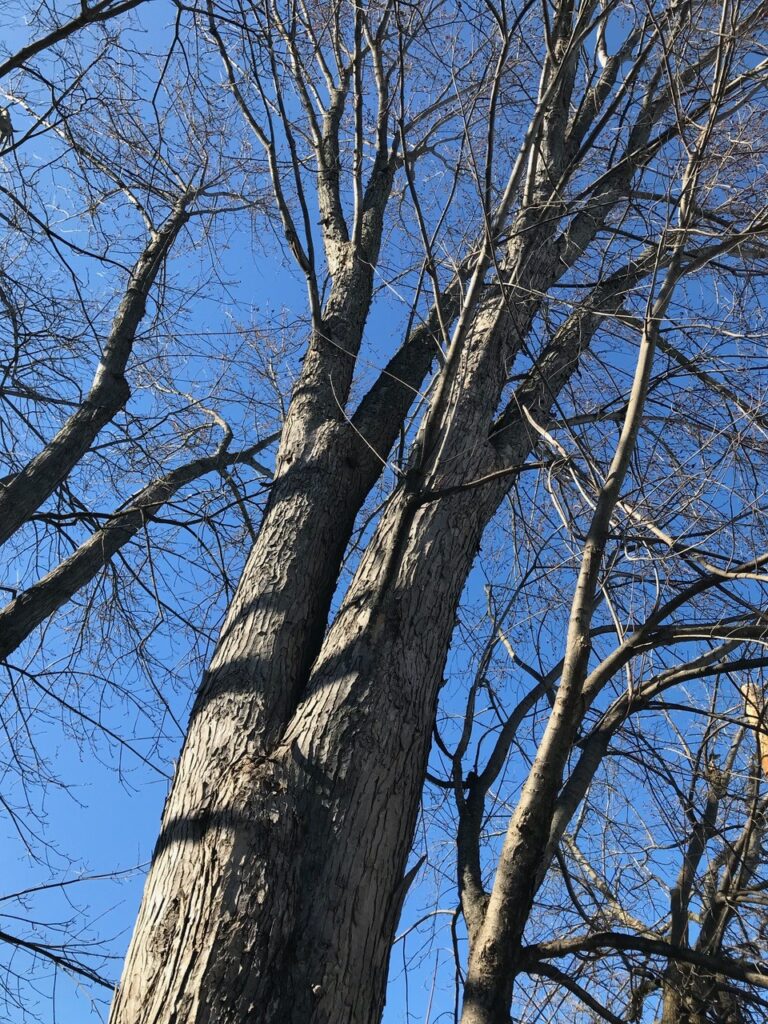
Fact or Myth?: Trees go dormant in winter, which means it’s a great time to take a break from tree care.
Myth.
In winter, it’s easy to be deceived by the dormant trees in your landscape. There aren’t any leaves, the weather is colder, you’re cooped up inside, and the holidays are coming up. With less time outdoors and a drop in tree activity, it’s easy to slip into the trap of forgetting and ignoring about your plants.
And yet, the winter season is actually the perfect time for particular services, thanks to tree dormancy.
This is especially true if you’re worried about:
- Safety concerns, especially if your trees are close to your home
- Dead, broken, diseased, or damaged branches
- Upcoming winter wind & storms
While there are many useful treatments your trees can benefit from in the winter, below are three services that are especially effective when your trees are dormant.
Tree Inspections in Winter
Tree inspections are more efficient & effective during the dormant season.

Just like you, trees need checkups too. Our Certified Arborists recommend having trees inspected at least once a year, to make sure they’re as healthy and safe for you and your landscape as they can possibly be. The dormant season is an ideal time for this.
Here’s why:
- It’s easier to identify crown structure and existing defects.
- Anything potentially dangerous can be better taken care of and managed before it’s too late.
- You and your family can rest with assurance that your landscape is safe for everyone to enjoy.
Tree Trimming in Winter
Tree trimming during the dormant season provides effective results & additional benefits.

Have you already identified any damaged or diseased branches on your trees? If so, you’re certainly not alone in mistakenly thinking it would be better to wait until after the dormant season is over; however, if you’ve been waiting until the perfect moment to have your trees trimmed, the time is now.
Here’s why:
- Removing dead, broken, diseased, or damaged branches from your tree provides greater safety for you and your landscape.
- Tree trimming in the dormant season is especially timely for large shade trees that usually have foliage in non-dormant seasons (without their leaves, defects are in plain sight!).
- If selective pruning of live branches is needed for your trees, it’s more efficiently accomplished in the winter.
- Pruning dormant trees helps prevent the spread of disease and protects against structure decline.
- The healing process for trees is quicker during the dormant season which can then yield better aesthetics and greater growth in the spring.
Tree Cabling & Bracing in Winter
Tree cabling & bracing is easier and especially beneficial during the windy dormant season.

Tree cabling & bracing provides support against upcoming winter storms and is commonly recommended during the dormant season.
Here’s why:
- Trees that aren’t structurally-sound have trouble protecting themselves against the inevitable winter storms.
- Although structural issues can often be resolved with trimming early on, tree cabling might be needed to save the tree’s structural integrity.
- The crown structure of a dormant tree is clearly visible which makes cabling and bracing a breeze.
During the dormant season, it seems as if trees go into a sort of hibernation – this doesn’t mean you should too! Instead, you can take advantage of the dormant season and also provide the winter tree maintenance they need.
By proactively caring for your trees in the winter, they can stay healthy and flourishing into spring.
For more information on on how you can care for your trees in the winter, check out & download our Essential Steps for Winter Tree Care Infographic.


